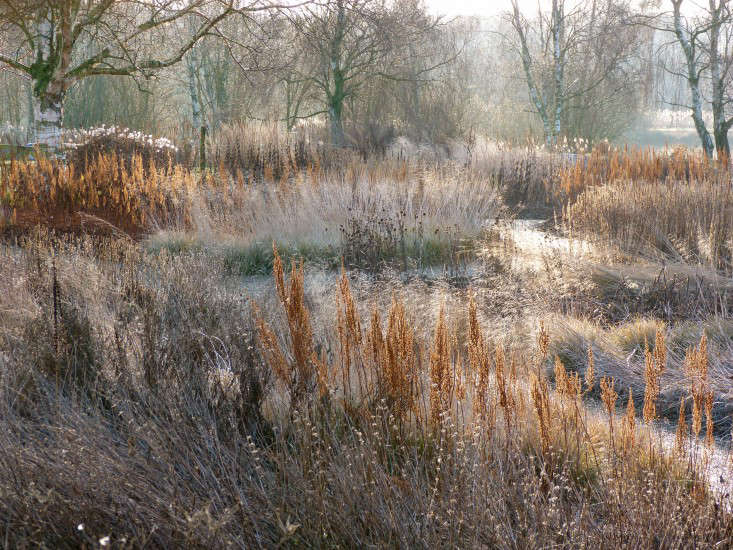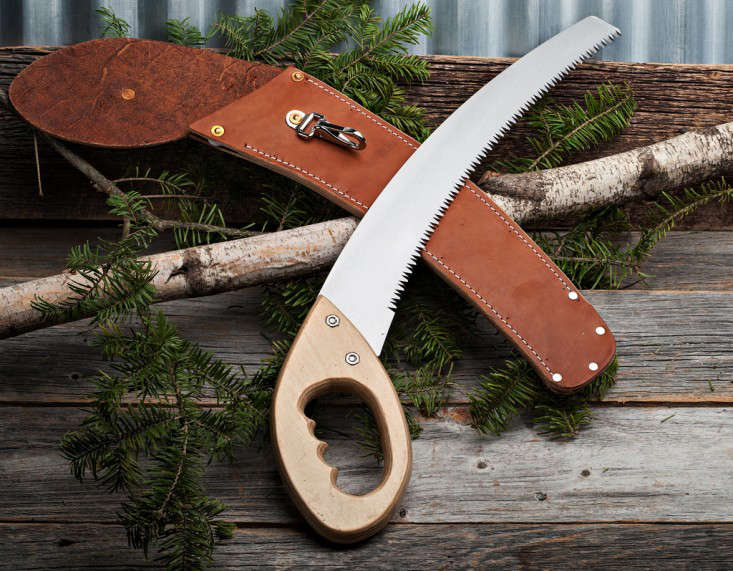Every summer, Cape Cod landscape designer Tim Callis creates beautiful gardens for the Outer Cape’s creative class: the writers, editors, architects, and New York designers (including decoupage artist and furniture designer John Derian) who descend on their gardens in the warm months, to revel in the flowers and harvest dinner from the vegetable and herb patches.
Every autumn, Callis stays behind to prepare for a severe New England winter. Ice storms, high winds, sleet, and blizzards all would like to obliterate his gardens. But good luck with that. Over the years, Callis has developed a foolproof plan for preventing severe winter damage. “We do a pretty serious fall cleanup,” he says. That’s putting it mildly.
After the first real frost of the season–which usually occurs around Thanksgiving–he heads into the garden in case anything needs to be cut, pruned, staked, or mulched. How does he decide? Here are his seven top tips for putting a garden to bed for winter:
Give Evergreens a Haircut

Callis gives evergreens an end-of-season haircut. “Now is a good time to shape your boxwood or ilex if it needs a little trim,” says Callis. “Make sure yews or any hedge looks neat.”
Allow Grasses a Last Gasp

Seed pods and ornamental grasses can look beautiful covered with frost. Callis leaves grasses standing until “things start looking kind of ratty after a couple of nor’easters. Then you go in and cut it down to the ground.”
Your cleanup date for grasses could be as late as February or as early as December, depending on the severity of a season’s storms. “When even the prettiest ornamental grass looks tired and miserable, it’s time,” says Callis. “And definitely don’t leave it until April, that’s getting too late because you want to make room for the new growth to come in.”
Feed the Soil

Callis mulches paths and garden beds with straw, which breaks down over the course of a season. “You can let that sit on top of beds for winter and then in spring it easily crumble into soil,” he says.
Autumn also is a good time to add compost to garden beds after perennials are cut down and the only thing left is the crowns of plants. “There might be a 1-inch stub of, say, a peony plant, and you just sprinkle the compost around the outside of the crown and let it sit there, ” says Callis. “Then you don’t need to work the soil in the beds so much in the spring when there’s a lot of other stuff to do.”
Divide and Conquer

After perennials quit blooming is the best time to divide crowded clumps. Callis splits up and transplants hostas, phlox, and daylilies in autumn. “It makes a mess but you’re not hurting because you’ve cut down the plant,” he says. “Plants are going dormant at this time of year, so they will adjust to having you dig them up and separate their roots. By spring, you won’t be able to tell you did anything murderous to a plant in the fall.”
Discipline the Wisteria

“You really should never turn your back on wisteria,” says Callis. “Deep down inside it’s a thug, and it wants to conquer the world. The best thing to do is to really make a commitment to prune it after it blooms.”
Ideally, you’ve pruned the wisteria two or three times over the course of the growing season. So by late autumn, all you have to deal with is “a lot of extraneous, long, thin stems coming off main shoots,” says Callis. “You want to control that.”
Also check at the base of the plant for runners. Every 8 to 12 inches, wisteria will start to root and become another plant, which becomes a nightmare.

“A gorgeous wisteria trunk looks amazing even without foliage,” says Callis. “Leave the seed pods on. Let them dangle until April, like chandelier earrings.”
Wait to Prune Trees

The best time to prune most trees is late winter or early spring, says Callis, who likes to prune them when he can see their structure without leaves to distract the eye. “For fruit trees, after Presidents’ Day, you start with grapevines and then the fruit trees.”
The exception is if something is brushing the house or hitting the roof. Remove those branches before storm season gets underway.
Transplant Trees and Shrubs

“I suggest you water a tree or shrub really well before you move it,” says Callis. “That will help it get settled.”
For more autumn cleanup ideas, see:
- Gardening 101: How to Use Fallen Leaves.
- 10 Easy Pieces: Leaf and Garden Rakes.
- Gardening 101: How to Plant a Bulb.
N.B.: This post is an update; it was first published September 2017.









Have a Question or Comment About This Post?
Join the conversation